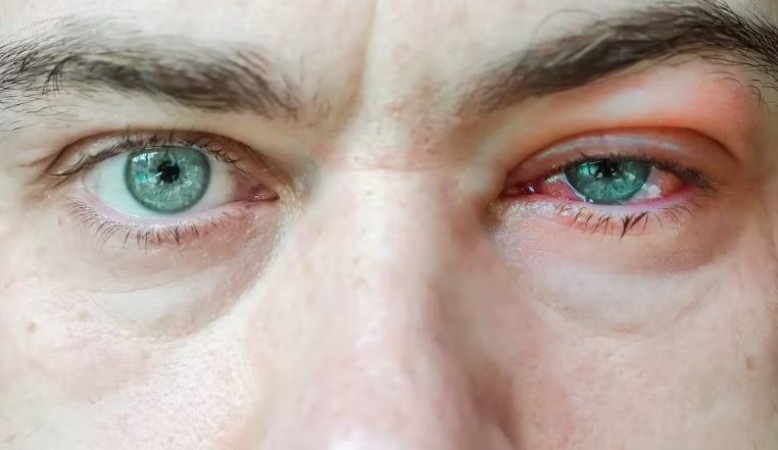
As the monsoon season (how to conjunctivitis spread) approaches, there is a sense of relief and happiness. However, continuous rains increase the risk of eye flu (conjunctivitis). Heavy rains create a conducive environment for the rapid spread of this eye infection, causing discomfort and inconvenience to many. Understanding (how to conjunctivitis spread) eye flu, its symptoms, and implementing preventive measures can help prevent this common monsoon disease.
How does conjunctivitis spread?
Conjunctivitis can be highly contagious and spreads through contact with someone who is already infected. The most common way the disease spreads is when infected people repeatedly touch their eyes and forget to clean their hands. If a person has conjunctivitis, avoid looking into their eyes and refrain from touching their handkerchief, towel, toilet spout, door handle, mobile, etc.
Symptoms of conjunctivitis:
According to doctors, you should visit an ophthalmologist as soon as conjunctivitis symptoms appear. Common symptoms include red eyes, itching, and tearing. There may also be discharge or crust around the eyes. If the doctor diagnoses conjunctivitis, they may prescribe antibiotic eye drops.
Symptoms of eye flu:
Redness of eyes: One of the primary symptoms of eye flu is redness of the affected eyes. The conjunctiva swells and fills with blood vessels, causing the eye to appear pink or red.
Itching and irritation: Infected individuals may experience itching, irritation, and discomfort in the eyes. Avoid rubbing the eyes to prevent further spreading.
Watery discharge: Eye flu often causes watery or sticky discharge from the eyes. This secretion can cause crust to accumulate around the eyelids, especially after sleeping.
Sensitivity to light: Individuals suffering from eye flu may be more sensitive to light, leading to discomfort in brightly lit environments.
Sensation: Swelling can cause some people to feel as if there is an object, such as sand or particles, in their eyes.
Preventive or precautionary measures:-
Personal hygiene: It is necessary to adopt good personal hygiene to prevent eye flu. Wash your hands regularly with soap and water, especially after touching your eyes or coming into contact with someone who has conjunctivitis.
Avoid touching the eyes: Refrain from touching or rubbing your eyes, as this can transfer infectious agents from your hands to the eyes, increasing the risk of infection.
Maintain hygiene: Make sure surfaces such as door handles, computer keyboards, and smartphones are regularly cleaned and disinfected to reduce the risk of transmission.
Avoid sharing personal items: Avoid sharing towels, handkerchiefs, or eye drops with others to prevent the infection from spreading.
Social distancing: If someone around you has eye flu, maintain a safe distance to reduce the risk of infection.
Stay indoors during the rain: During heavy rains, try to stay indoors as much as possible to minimize exposure to rainwater, which may contain harmful pollutants and allergens.
Use protective glasses: If you need to go out during the monsoon, consider wearing protective glasses such as sunglasses to shield your eyes from dust, allergens, and rain splashes.
Monsoon (how to conjunctivitis spread) also brings the possibility of spreading eye flu. Being cautious about personal hygiene, avoiding contact with infected individuals, and practicing preventive measures can help keep eye flu at bay. If you experience any symptoms of eye flu, seek medical help immediately to get proper treatment and prevent its spread to others.
Unveiling the Vibrant Bounty: Exploring the 7 Incredible Benefits of Beetroot